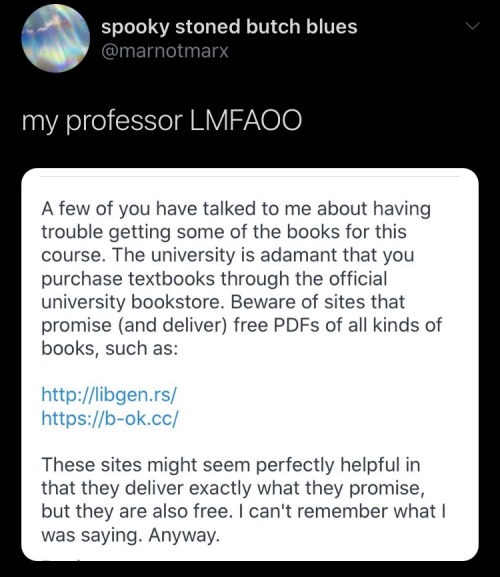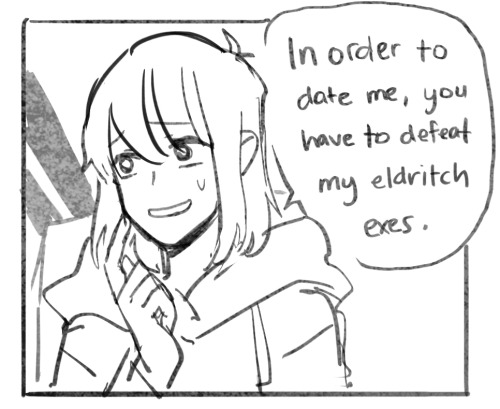Refseek.com


refseek.com
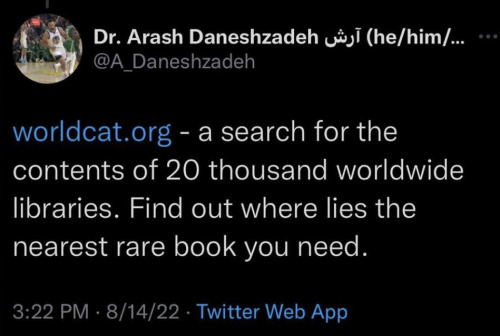
www.worldcat.org/

link.springer.com

http://bioline.org.br/
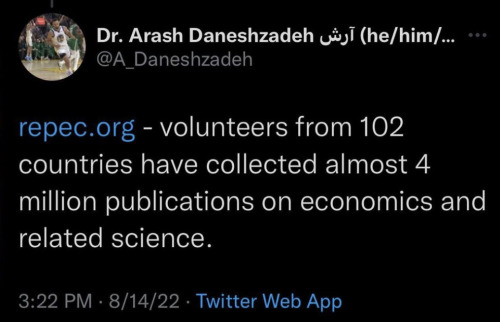
repec.org

science.gov

pdfdrive.com
More Posts from Cardinalfandom and Others
Once upon a time I worked in this little burger/coffee/ice cream shop and a lady came in one winter and asked if we had a caramel apple drink and we were like ‘well we have cider’ and she was like ‘no I don’t remember what it’s called but this place made a drink that was chai tea, apple cider, and caramel’ and Breezy offered to try and make something for her but she changed her mind and left so Breezy and I were like ‘alright let’s try this’ because we had chai tea, instant cider mix, a shit ton of caramel, instant hot water from the espresso and too much free time.
And let me tell you it was delightful. It tastes like watching the leaves changing color and dancing in the wind. It tastes like picking out pumpkins and gourds and fresh apples at the farm up north. It tastes like witches and freedom.
I make it every year now and this year I walked in the house on the morning of October first with all the ingredients and shouted ‘FALL DRINK’ and my roommates were like ‘????’ so I made them Fall Drink and now every time they get home from work they’re like ‘Fall Drink pls?????’
Anyway I remember literally nothing else about that woman but I’m very grateful to her.
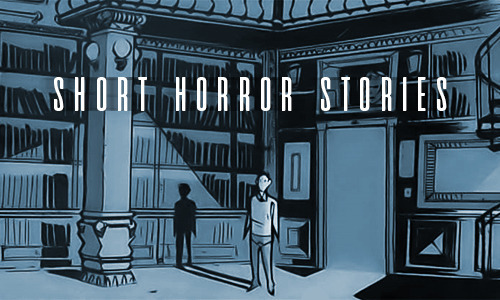
This is a compiled list of some of my favorite pieces of short horror fiction, ranging from classics to modern-day horror, and includes links to where the full story can be read for free. Please be aware that any of these stories may contain subject matter you find disturbing, offensive, or otherwise distressing. Exercise caution when reading. Image art is from Scarecrow: Year One.
PSYCHOLOGICAL: tense, dread-inducing horror that preys upon the human psyche and aims to frighten on a mental or emotional level.
“The Frolic” by Thomas Ligotti, 1989
“Button, Button” by Richard Matheson, 1970
“89.1 FM” by Jimmy Juliano, 2015
“The Yellow Wallpaper” by Charlotte Perkins Gilman, 1892
“Death at 421 Stockholm Street“ by C.K. Walker, 2016
“The Ones Who Walk Away from Omelas” by Ursula K. Le Guin, 1973
“An Empty Prison” by Matt Dymerski, 2018
“A Suspicious Gift” by Algernon Blackwood, 1906
CURSED: stories concerning characters afflicted with a curse, either by procuring a plagued object or as punishment for their own nefarious actions.
“How Spoilers Bleed” by Clive Barker, 1991
“A Warning to the Curious” by M.R. James, 1925
“each thing i show you is a piece of my death” by Stephen J. Barringer and Gemma Files, 2010
“The Road Virus Heads North” by Stephen King, 1999
“Ring Once for Death” by Robert Arthur, 1954
“The Mary Hillenbrand Cassette“ by Jimmy Juliano, 2016
“The Monkey’s Paw” by W.W. Jacobs, 1902
MONSTERS: tales of ghouls, creeps, and everything in between.
“The Curse of Yig” by H.P. Lovecraft and Zealia Bishop, 1929
“The Oddkids” by S.M. Piper, 2015
“Nightmare at 20,000 Feet” by Richard Matheson
“The Graveyard Rats” by Henry Kuttner, 1936
“Tall Man” by C.K. Walker, 2016
“The Quest for Blank Claveringi“ by Patricia Highsmith, 1967
“The Showers” by Dylan Sindelar, 2012
CLASSICS: terrifying fiction written by innovators of literary horror.
“The Tell-Tale Heart” by Edgar Allan Poe, 1843
“The Interlopers” by Saki, 1919
“The Statement of Randolph Carter“ by H.P. Lovecraft, 1920
“The Damned Thing” by Ambrose Pierce, 1893
“The Legend of Sleepy Hollow” by Washington Irving, 1820
“August Heat” by W.F. Harvey, 1910
“The Black Cat” by Edgar Allan Poe, 1843
SUPERNATURAL: stories varying from spooky to sober, featuring lurking specters, wandering souls, and those haunted by ghosts and grief.
“Nora’s Visitor” by Russell R. James, 2011
“The Pale Man” by Julius Long, 1934
“A Collapse of Horses” by Brian Evenson, 2013
“The Jigsaw Puzzle” by J.B. Stamper, 1977
“The Mayor Will Make A Brief Statement and then Take Questions” by David Nickle, 2013
“The Night Wire” by H.F. Arnold, 1926
“Postcards from Natalie” by Carrie Laben, 2016
UNSETTLING: fiction that explores particularly disturbing topics, such as mutilation, violence, and body horror. Not recommended for readers who may be offended or upset by graphic content.
“Survivor Type” by Stephen King, 1982
“I’m On My Deathbed So I’m Coming Clean…” by M.J. Pack, 2018
“In the Hills, the Cities” by Clive Barker, 1984
“The New Fish” by T.W. Grim, 2013
“The Screwfly Solution” by Racoona Sheldon, 1977
“In the Darkness of the Fields” by Ho_Jun, 2015
“The October Game” by Ray Bradbury, 1948
“I Have No Mouth, and I Must Scream” by Harlan Ellison, 1967
HAPPY READING, HORROR FANS!
can we as a society make puppetry cool again. like lets make it trendy. Mainstream. more people should get into doing it and more people should appreciate it. puppetry requires craftsmanship and charisma and physical acting and vocal performance!! you can’t get that from ai. it has a charm to it that neither 2D nor cg animation has. Have you ever watched a puppetry performance and realized you were genuinely convinced that the puppet was getting into bed or eating something or giving a hug that you wholly forgot there was some guy’s arm in there.
isn’t it lovely. to make a funny little guy to tell stories with. is that not so human of us. it’s such a lovely art form. I love you puppets I love you muppets I love you marionettes I love you handmade sock puppets I love you paper bags with googley eyes I love you armatures I love you I love you I love you!!!!!
“Beware the autumn people. For some, autumn comes early, stays late, through life, where October follows September and November touches October and then instead of December and Christ’s birth there is no Bethlehem Star, no rejoicing, but September comes again and old October and so on down the years, with no winter, spring or revivifying summer. For these beings, fall is the only normal season, the only weather, there be no choice beyond. Where do they come from? The dust. Where do they go? The grave. Does blood stir their veins? No, the night wind. What ticks in their head? The worm. What speaks through their mouth? The toad. What sees from their eye? The snake. What hears with their ear? The abyss between the stars. They sift the human storm for souls, eat flesh of reason, fill tombs with sinners. They frenzy forth. In gusts they beetle-scurry, creep, thread, filter, motion, make all moons sullen, and surely cloud all clear-run waters. The spider-web hears them, trembles—breaks. Such are the autumn people.”
— Ray Bradbury, Something Wicked This Way Comes
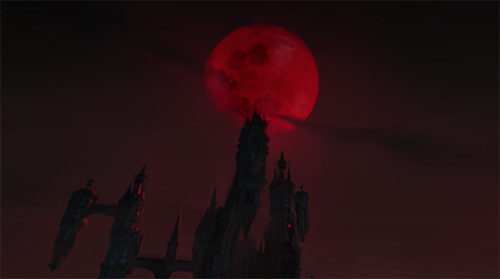
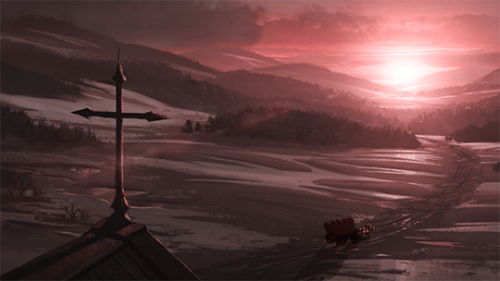

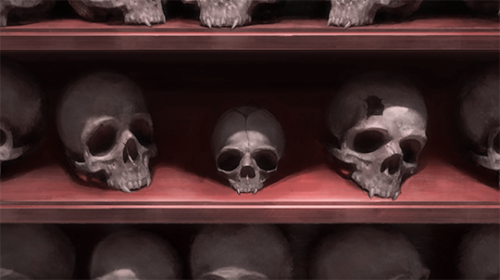
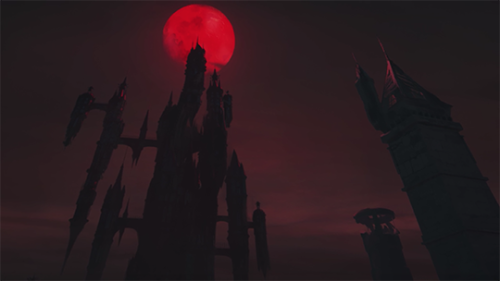
some castlevania halloween aesthetics









V.F.D’s Codes (Happy bi visibility day!)
I cannot emphasize enough how much you need to read thoroughly through the terms of any publication before you send your writing to them. It is mandatory that you know and understand what rights you’re giving away when you’re trying to get published.
Just the other day I was emailed by a relatively new indie journal looking for writers. They made it very clear that they did not pay writers for their work, so I figured I’d probably be passing, but I took a look at their Copyright policy out of curiosity and it was a nightmare. They wanted “non-exclusive, irrevocable, royalty-free, perpetual, worldwide license and right to use, display, reproduce, distribute, and publish the Work on the internet and on or in any medium” (that’s copy and pasted btw) and that was the first of 10 sections on their Copyright agreement page. Yikes. That’s exactly the type of publishing nightmare you don’t want to be trapped in.
Most journals will ask for “First North American Rights” or a variation on “First Rights” which operate under the assumption that all right revert back to you and they only have the right to be the first publishers of the work. That is what you need to be looking for because you do want to retain all the rights to your work.
You want all rights to revert back to you upon publication in case you, say, want to publish it again in the future or use it for a bookmark or post it on your blog, or anything else you might want to do with the writing you worked hard on. Any time a publisher wants more than that, be very suspicious. Anyone who wants to own your work forever and be able to do whatever they want with it without your permission is not to be trusted. Anyone who wants all that and wants you to sign away your right to ever be paid for your work is running a scam.
Protect your writing. It’s not just your intellectual property, it’s also your baby. You worked hard on it. You need to do the extra research to protect yourself so that a scammer (or even a well meaning start up) doesn’t steal you work right from under you nose and make money off of it.
New clip of Carmelita Spats with the Baudelaires & Quagmires from The Austere Academy
-
 asexualreptile reblogged this · 2 days ago
asexualreptile reblogged this · 2 days ago -
 ghosttoasts reblogged this · 2 days ago
ghosttoasts reblogged this · 2 days ago -
 zuzulos reblogged this · 2 days ago
zuzulos reblogged this · 2 days ago -
 ghosttoasts liked this · 2 days ago
ghosttoasts liked this · 2 days ago -
 bandanabiel reblogged this · 2 days ago
bandanabiel reblogged this · 2 days ago -
 bandanabiel liked this · 2 days ago
bandanabiel liked this · 2 days ago -
 corporalravaille reblogged this · 2 days ago
corporalravaille reblogged this · 2 days ago -
 izzythedemigod reblogged this · 2 days ago
izzythedemigod reblogged this · 2 days ago -
 izzythedemigod liked this · 2 days ago
izzythedemigod liked this · 2 days ago -
 arlowarchive liked this · 2 days ago
arlowarchive liked this · 2 days ago -
 lockdownthepanicroom liked this · 2 days ago
lockdownthepanicroom liked this · 2 days ago -
 theintroverse liked this · 2 days ago
theintroverse liked this · 2 days ago -
 myanimecorner reblogged this · 2 days ago
myanimecorner reblogged this · 2 days ago -
 thatnerd1634 liked this · 2 days ago
thatnerd1634 liked this · 2 days ago -
 dragonsheepstudios reblogged this · 2 days ago
dragonsheepstudios reblogged this · 2 days ago -
 khallianessa liked this · 2 days ago
khallianessa liked this · 2 days ago -
 casual-frenzy liked this · 2 days ago
casual-frenzy liked this · 2 days ago -
 viothewolx reblogged this · 2 days ago
viothewolx reblogged this · 2 days ago -
 viothewolx liked this · 2 days ago
viothewolx liked this · 2 days ago -
 cherri-ish liked this · 2 days ago
cherri-ish liked this · 2 days ago -
 stardustmorozov reblogged this · 2 days ago
stardustmorozov reblogged this · 2 days ago -
 silo-fatigado reblogged this · 2 days ago
silo-fatigado reblogged this · 2 days ago -
 transmascneetloser liked this · 2 days ago
transmascneetloser liked this · 2 days ago -
 dreadpiratedee liked this · 2 days ago
dreadpiratedee liked this · 2 days ago -
 silo-fatigado liked this · 2 days ago
silo-fatigado liked this · 2 days ago -
 cherry-blossom-fantasy reblogged this · 2 days ago
cherry-blossom-fantasy reblogged this · 2 days ago -
 watersite reblogged this · 2 days ago
watersite reblogged this · 2 days ago -
 watersite liked this · 2 days ago
watersite liked this · 2 days ago -
 sovi3t-slim3 reblogged this · 2 days ago
sovi3t-slim3 reblogged this · 2 days ago -
 sovi3t-slim3 liked this · 2 days ago
sovi3t-slim3 liked this · 2 days ago -
 transfemhyunckel liked this · 2 days ago
transfemhyunckel liked this · 2 days ago -
 apalooka reblogged this · 2 days ago
apalooka reblogged this · 2 days ago -
 deathlessorchid reblogged this · 2 days ago
deathlessorchid reblogged this · 2 days ago -
 deathlessorchid liked this · 2 days ago
deathlessorchid liked this · 2 days ago -
 ahumoki0 reblogged this · 2 days ago
ahumoki0 reblogged this · 2 days ago -
 goldbryn reblogged this · 2 days ago
goldbryn reblogged this · 2 days ago -
 goldbryn liked this · 2 days ago
goldbryn liked this · 2 days ago -
 ninja-pieking liked this · 2 days ago
ninja-pieking liked this · 2 days ago -
 long-legged-llama reblogged this · 2 days ago
long-legged-llama reblogged this · 2 days ago -
 underdressedgoth reblogged this · 2 days ago
underdressedgoth reblogged this · 2 days ago -
 lizz-the-box liked this · 2 days ago
lizz-the-box liked this · 2 days ago -
 masontheevildm reblogged this · 2 days ago
masontheevildm reblogged this · 2 days ago -
 masontheevildm liked this · 2 days ago
masontheevildm liked this · 2 days ago -
 staring-at-a-blank-pagee reblogged this · 2 days ago
staring-at-a-blank-pagee reblogged this · 2 days ago -
 staring-at-a-blank-pagee liked this · 2 days ago
staring-at-a-blank-pagee liked this · 2 days ago -
 gwillystrations liked this · 2 days ago
gwillystrations liked this · 2 days ago -
 kilgarraghforever reblogged this · 2 days ago
kilgarraghforever reblogged this · 2 days ago -
 kilgarraghforever liked this · 2 days ago
kilgarraghforever liked this · 2 days ago
